How to Travel Peru on a Budget
- Bell
- April 20, 2025
- 2 Comments
Peru has so much to offer, from the famous Machu Picchu and Inka Trail to South America’s biggest sand dunes to some world-class surfing. You will need at least 2 weeks to begin covering the highlights. Here is how to do exactly that on a budget!
Before heading to Peru, I honestly didn’t know much about the country except that it had Machu Picchu. Which (embarassingly) is also the only reason I went there from Chile, as it had been on my bucket list for years.
You can imagine my surprise when I ended up spending 5 weeks in Peru and loving every second. Sure, Machu Picchu was a highlight, but there are just so many other highlights that are not as talked about (check out my full guide on them here).
As for budgeting, much of South America is a lot more affordable than many other travel destinations (I’m currently in Canada and the price of milk is making me want to cry). That being said, the many experiences and tours you will most likely want to do in Peru can quickly add up.
Here is my full guide on travelling Peru on a budget, from transportation to accommodation to tours and activities. Please leave a comment with any additional tips or experiences 🙂
This blog may contain affiliate links to support the running of the blog. If you make a purchase through these links, I will earn a commission at no extra cost to you. Thank you.
Table of Contents
ToggleHow to get to Peru:
Lima is Peru’s only international airport so you will likely start your journey here at Jorge Chavez International Airport. You can find my full guide on Lima airport and things to do in the city here.
The other way to get to Peru is by land, usually by bus. I personally came from Bolivia, more specifically Copacabana and got an overnight bus to Arequipa. I have written a full guide on bus travel in Peru for you here. Buses are the most affordable way to get around Peru.
You could also enter from Chile, Brazil, Ecuador or Colombia by bus. You usually have to get out of the bus for border crossings and get stamped out of one country and another stamp to enter the new country.
How to get around Peru on a budget:
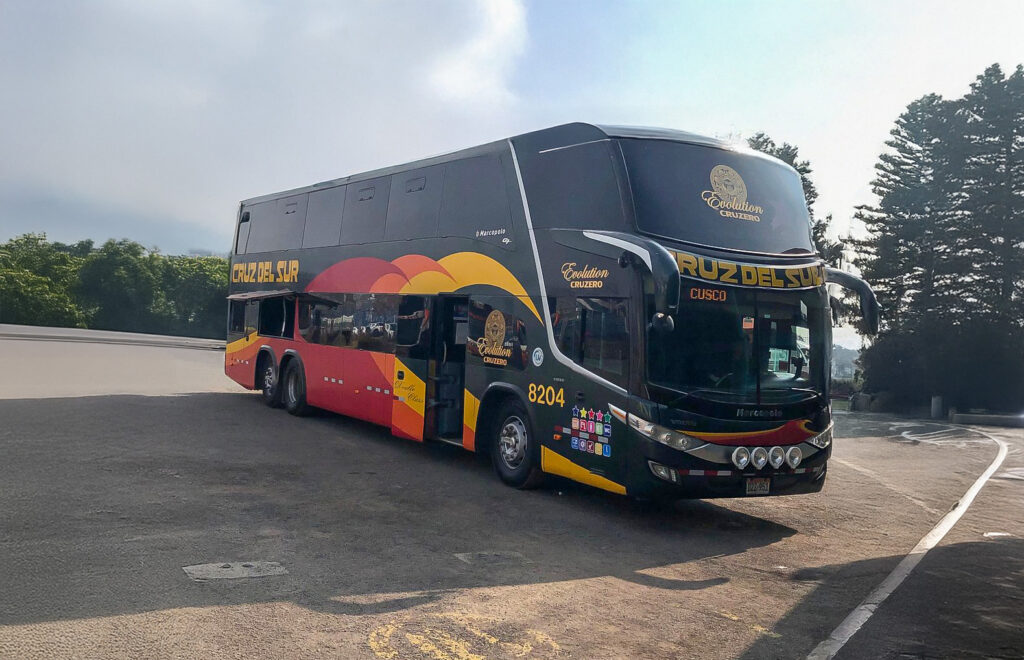
The absolute cheapest way to travel around Peru is by bus. You can sometimes also find cheap flights between major cities, though I would only really recommend this for getting to and from Cusco.
I have written a full guide on Bus travel in Peru, but the general rule is that the more local the buses are, the cheaper they are. That being said, it is important to balance safety with the cost. The bus companies I would recommend for travelling between cities are Cruz del Sur, Linea and Civa. Other companies are fine for shorter distances, but I would not recommend them for night buses.
Following on from that, night buses save you a night of accommodation and usually don’t cost more than $20-50, depending on how far the trip is (I found Cusco to Lima the most expensive but also longest). Some of the main night bus routes would be Arequipa-Cusco, Lima-Cusco, Lima-Huaraz, Huaraz/Lima-Trujillo.
For transport within cities, I found most places in Peru pretty walkable and there was always a local bus that you could take for a few Sol (often less than $1). Places like Huacachina also had the small moto-taxis (kind of look like TukTuks) that are affordable and fun.
Using taxis in Peru
Taxis in general are more affordable in Peru than back home, yet if you flag them down on the street they will definitely overcharge you. The cheapest taxi option is the app InDrive. InDrive is the local Uber and I wish I had started using it much earlier in my trip. You do need cash and ideally coins for it so you have the correct change, but that is easy in Peru as many places still only accept cash.
InDrive works through a sort of bargaining system. When you put in where you want to go, the system will tell you a suggested price. Drivers can then accept that fare or make other suggestions. I found that the first few will always try and get more money, but you can get a very fair price if you wait it out for a few minutes.
Uber also works well especially during busy periods, but you will pay a bit more than using InDrive.
Where to stay in Peru for any budget:
Finding affordable accommodation in Peru is actually pretty easy. Most hostels start at just $10 for a dorm room, sometimes even less. I have also managed to find really cool AirBnBs for around $15 per night, so it is worth checking there too.
I have summarised my favourite affordable hostels in Peru’s main cities below, as well as some other options at different price points:
Lima:
Cusco:
Sacred Valley
Arequipa:
$ – Los Andes Bed & Breakfast or Arequipay Hostel
$$ – Hotel Casona Solar or Casa Arequipa
$$$ – Palla Boutique Hotel
Huacachina
$ – Viajero Kokopelli Huacachina Hostel (my favourite hostel in Peru) or Bananas Adventure Hostel Huacachina
$$ – Ecocamp Huacachina
$$$ – Glamping in the desert or
Huanchaco:
$ – ATMA Hostel & Yoga
$$ – Yellow House or Punta Huanchaco Hostel
The Amazon Rainforest (Puerto Maldonado):
$ – Don Jaime Hostel
$$ – Enai or Kapievi Ecovillage
$$$ – Hacienda Herrera
Huaraz:
$ – Lhotse Hostel B&B or Kame House Backpacker
$$ – Casa de Ana B&B
$$$ – Akilpo Home (one of the most expensive in Huaraz and still only £45 per night)
Eating on a Budget

Peru is an affordable country and food is no different. I managed to find most meals for around $5-10. Here are a few tips on keeping the daily food budget as low as possible:
- Cook your own meals – this is the most basic tip but groceries are usually very affordable in Peru (except for Cusco), so if your hostel or AirBnB has a kitchen, the absolute cheapest way to eat will be to make your own food.
- Menu del dia – As a tourist, most restaurants will not mention their “Menu del Dia” to you, yet almost all of them have one. The Menu del Dia is their (lunch) menu of the day and usually only costs around 10-15 Soles ($4-5). For that price, you usually get an entree soup or other dish and a local main, such as Lomo Saltado (beef stir-fried with veggies usually served with fries and rice). Sometimes you even get a dessert. It’s by far the most affordable option in any restaurant.
- Local Markets & street food – Every city also has a market and street food stalls where you can find local food at very affordable prices. Make sure to bring cash and follow the locals for the best eats.
- Avoid tourist traps – If you look at a menu and each dish is more than $15, you have found yourself a tourist trap. You will usually find these places right by the main plaza of bigger cities (e.g. Cusco) and they often come with pushy hosts and only English menus.
Affordable Activities & Tours in Peru
Doing tours and activities can quickly become the most expensive part of your Peru trip. From Machu Picchu (which needs its own section below) to Colca Canyon to a Nazca Lines Flights. Here are some tips of keeping the costs to a minimum:
- Find local tour operators – it is often more expensive to buy tours online, especially for day tours from cities like Cusco. You can find the cheapest tour by walking around the city and talking to different, local operators. Some will even haggle with you, especially if you mention you have found a cheaper price elsewhere. Operators often also offer bundle prices for several tours and reduce the price further if you are paying cash.
- Free walking tours – this is my favourite way to save money wherever I go and Peru is no different. I have taken free walking tours in Arequipa, Cusco and Lima and thought they were all amazing. You tip at the end and they usually still end up way cheaper than paid tours.
- Hostel deals – Some hostels and hotels have deals with local operators and are able to get you tours at amazing prices. I found this a lot in Huaraz, but other cities do the same.
- Be selective about your activities – for example, the Nazca lines can be seen for a few Sol from a viewing tower, instead of the VERY expensive flight. Or Lima’s incredible food can be explored on a free food tour instead of one of the pricier ones. Figure out which tours are worth it for you and which ones you are okay to skip.
- Travel in the off-season – The best time to head to Peru is during dry season which is May-October. It is also the most expensive time. Tours and accommodation often start to get cheaper outside of those times. November and April are hence great times for budget trips as the rain season is just starting/ending.
How to Visit Machu Picchu Without Breaking the Bank
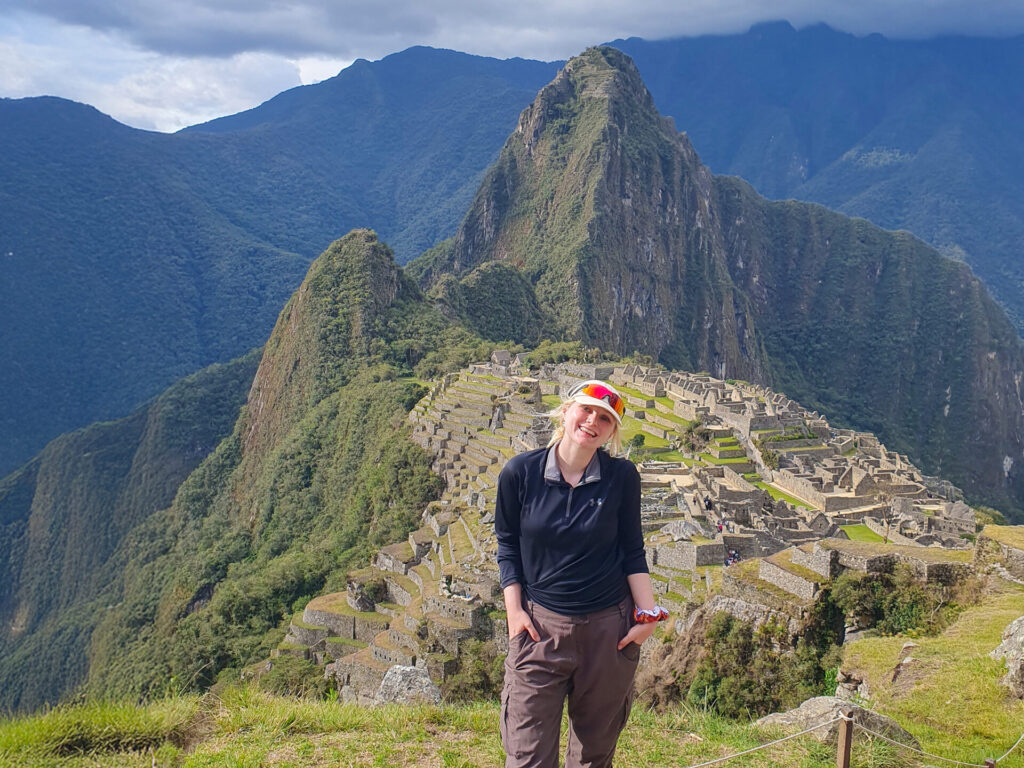
Visiting Machu Picchu was by far the most expensive part of my trip to Peru. It was also one of the best experiences of my entire life. So my first tip here would be – leave space in the budget for Machu Picchu.
I personally did the short 2-Day Inka Trail with Machu Picchu Reservations, who were the cheapest operator with good reviews. It cost me $450 and was honestly worth every penny, I even got to enter Machu Picchu twice. It included the train to the start of the Inka trail and back to Cusco, transfers, accommodation in Aguas Calientes, food and the guide for the two days. I think where I noticed the difference to more expensive tours was the guide. While he was super lovely and I learned a lot about Machu Picchu from him, I noticed that tours by e.g. Alpaca Expeditions got more historical and cultural information on each site than us. Their tour is about $100 more, so that is just something to keep in mind when deciding what to book.
The famous 4-day Inka Trail will set you back starting at around $700. It is a once-in-a-lifetime experience so if you have the savings and are early enough to book it (I wasn’t hence the short one), I would highly recommend doing so.
Cheaper alternatives to the Inka Trail
The Inka Trail is the most expensive way to see Machu Picchu. There are two alternative, cheaper options:
1. See Machu Picchu without a tour
Seeing Machu Picchu without a tour is certainly possible. You can make your way to Aguas Calientes by taking a bus to Ollantaytambo and then the train from there to your final destination. From Aguas Calientes, buses go up to Machu Picchu in regular intervals. You don’t need to prebook but just queue in the morning – return tickets are $24. You will need to pre-book your Machu Picchu tickets EARLY or queue the night before, an in-depth guide on this is found here. Doing it on your own will probably set you back around $150 for one day.
2. Do the Salkantay Trek
When I visited Peru, I met a ton of travellers who had done the Salkantay Trek. All of them said it was an incredible experience.
The Trek is easier to book than the Inka Trail as there is no regulation on how many people can go, so it does not sell out. Some tours include Machu Picchu tickets, some expect you to organise these yourself (especially if booking late). You can do the famous 5-day trek with the Machu Picchu ticket included starting at $300, which includes meals and accommodation so is a great deal. This trek is more physically demanding and more about nature than e.g. the history of the Inca trail, so make sure you do your research and are prepared.
Other Budget Tips for Peru
Doing laundry is easy and cheap if you use local places
Hotels and hostels massively overcharge for laundry in Peru. Most charge 10-15 soles per kilo of laundry, which quickly adds up. Most local places won’t charge more than 5 soles per kilo (~1.20€) – you may need to haggle a bit though.
In Cusco, I never paid more than 3 soles per kilo, but the lady initially tried to charge me 6. Stand your ground and try and speak Spanish to get a fairer price.
The laundry was generally really clean after too as they have actual machines and even dryers in a lot of Peru (this wasn’t the case in Bolivia). I always used the “2-hour” places that take more like 24 hours so just make sure you have a bit of extra time.
SIM Cards
While local SIM cards are by far the cheapest option, I would only recommend it if you are staying 4 weeks or so. I personally had a bunch of issues with my local SIM card in Peru, where they signed me up for a monthly card instead of a one-off even though that’s what I was told. It took a lot of time to resolve. Hence, I would recommend just getting an E-SIM – some of the cheapest options start at just $4.50 for a week.
Pack toilet paper
A lot of toilets on tours will charge you a few Sol to use them and then more if you need toilet paper. Some don’t even have toilet paper. So, my number one tip would be to always have a bit of toilet paper on you for emergencies and to avoid paying extra.
How much time do you need in Peru?
I would say an absolute minimum of two weeks is required to see the main sights of Peru, 3-4 if you want to add things like the Amazon rainforest and longer hikes.
You can see a very condensed version of the highlights in one week if you are super short on time or on a tighter budget. It would likely only be Cusco, Sacred Valley and Machu Picchu though.
Keep in mind that a lot of Peru is at high altitude, so you will need to add in a few days for acclimatisation for example in Cusco and Huaraz. Do not underestimate altitude sickness, trust me!
Hi, I'm Bell

My blog is here to show you that there isn’t one correct way to travel the world. Together, we can figure out what that means for you. Learn more about me here!
Latest from the blog:
Travel Off Script contains affiliate links to support the running of the blog. If you make a purchase through these links, I will earn a commission at no extra cost to you. Thank you.

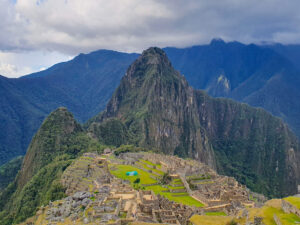

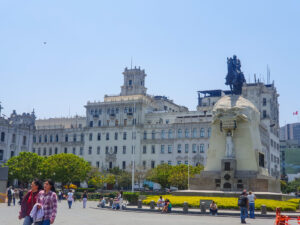
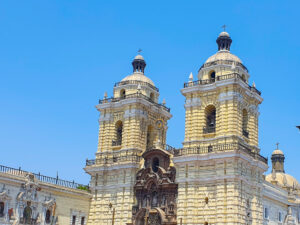


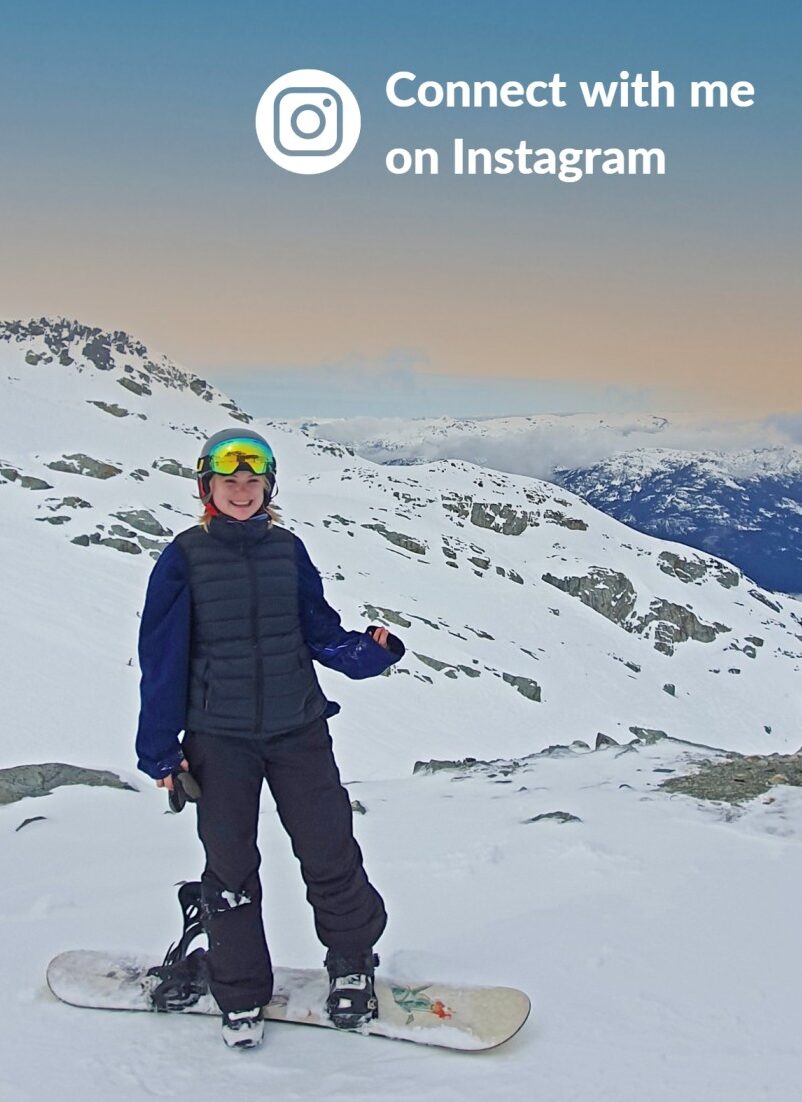
2 Comments
Found this super helpful for planning my upcoming trip to Peru! Did you feel save as a female, solo traveller?
Yes, I felt mostly safe solo travelling in Peru. Some cities it is best to not walk around alone at night in certain areas (such as Lima), but most hostels will be able to give you that information. Keep your valuables close to you when walking around (as always) and you should hopefully have no issues!